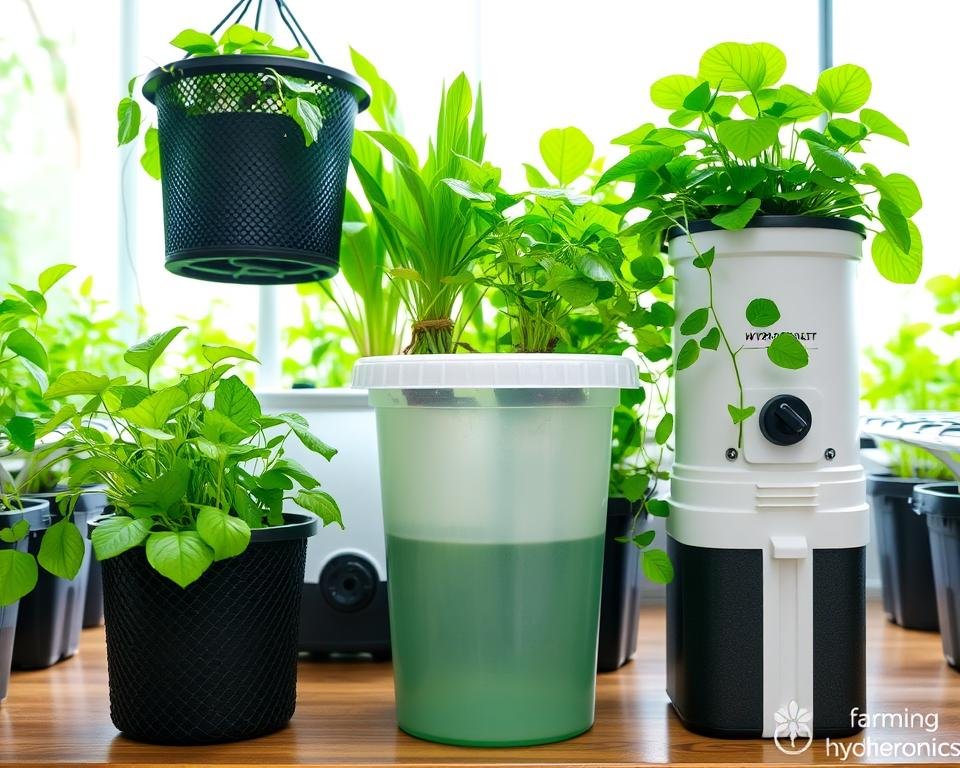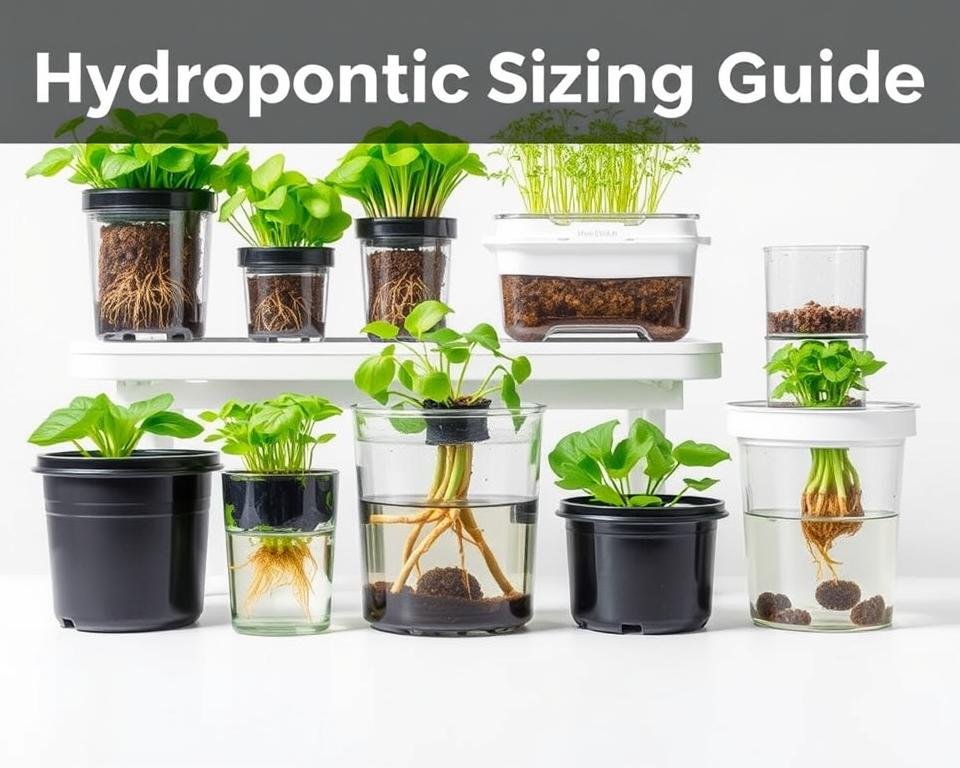Hydroponic Pots: The Best Containers for Thriving Plants
Growing plants without soil might sound like science fiction. But hydroponic pots have changed urban gardening. I started in a small apartment kitchen, turning a windowsill into a green oasis.
These pots are more than containers. They’re essential for plants in soilless systems. They offer precise nutrients and support for roots. This makes them the best pots for hydroponics for amazing plant growth in small spaces.
If you garden in the city or focus on sustainable farming, hydroponic containers are key. They boost yields, ensure clean food, and save space.
Key Takeaways
- Hydroponic pots support soilless plant growth with advanced design
- Containers range from 0.5L to 60L for diverse plant types
- Specialized pots maximize space and nutrient delivery
- Eco-friendly materials support sustainable gardening practices
- Innovative designs promote healthy root development
Understanding the Fundamentals of Hydroponic Growing Containers
Hydroponic growing containers are a new way to grow plants. They don’t use soil like regular gardens do. Instead, they offer a way to control how plants get nutrients and grow.
Soilless systems have changed farming a lot. They give plants more than traditional farming can. With these systems, plants can grow in amazing ways.
Benefits of Soilless Cultivation Systems
- Uses 90% less water compared to traditional agriculture
- Allows plants to grow up to 50% faster than soil-based methods
- Eliminates weeding and reduces pest incidents by over 90%
- Enables year-round gardening in controlled environments
Key Components of Hydroponic Container Setup
| Component | Function | Optimal Conditions |
|---|---|---|
| Nutrient Solution | Plant Nutrition Delivery | 800 ppm concentration |
| Water Quality | Nutrient Absorption | Reverse Osmosis Water (98% purity) |
| pH Levels | Nutrient Uptake | 5.5 – 6.5 Range |
Role of Containers in Plant Development
Your hydroponic containers are more than just places for plants. They are complex systems that help plants grow well. They control the environment to help roots grow fast and absorb nutrients well.
Hydroponics isn’t just a method; it’s a scientific approach to maximizing plant potential in controlled environments.
Whether you grow herbs, greens, or fruiting plants, knowing about soilless cultivation changes gardening. It makes growing plants more effective and interesting.
Types of Hydroponic Pots and Their Applications
Choosing the right container is key for a successful hydroponic garden. Each pot type has its own benefits for your soilless garden. Let’s look at the most popular ones for growing plants.
Net Pots for Hydroponic Systems
Net pots are made for better root growth and air flow. They have mesh that lets roots spread out and breathe well. They’re great for deep water culture (DWC) and nutrient film technique (NFT) systems.
- Exceptional root aeration
- Lightweight design
- Ideal for water-based hydroponic setups
Fabric Pots: Breathable Growing Solutions
Fabric pots help with drainage and air pruning for roots. Their material stops roots from circling and helps them grow strong. These pots are best for ebb and flow or drip irrigation systems.
“Fabric pots revolutionize root zone management in hydroponics” – Hydroponic Growing Magazine
Plastic Containers: Versatile Hydroponic Options
Plastic containers are a favorite in hydroponics because they’re tough and versatile. They come in many sizes and shapes, fitting different plants and growth stages.
| Pot Type | Best Use | Advantages |
|---|---|---|
| Net Pots | Water-based Systems | Maximum Root Exposure |
| Fabric Pots | Drip Systems | Air Pruning |
| Plastic Containers | Multiple Systems | Durability |

Your choice of hydroponic pot depends on your growing system, plant type, and goals. Try out different containers to find the best fit for your garden.
Essential Features of Quality Growing Containers
Choosing the right hydroponic containers is key for growing plants without soil. The right horticulture supplies can greatly affect plant growth and system performance. Knowing what to look for helps you pick the best greenhouse accessories.

When picking hydroponic pots, several important factors matter. The right container can greatly improve your gardening success.
Material Durability and Longevity
Good hydroponic containers must handle constant moisture and nutrients. Look for materials that don’t break down or react with chemicals. Hydroponic systems need containers that stay strong for a long time.
- Food-grade plastics
- UV-resistant materials
- Non-reactive surfaces
Drainage and Aeration Requirements
Good root health needs proper drainage and air flow. Your containers should have:
- Multiple drainage holes
- Enough air flow channels
- Designs that help roots get oxygen
“The root system is the heart of hydroponic success” – Hydroponic Experts
Size and Capacity Considerations
Container size affects plant growth. Different plants need different spaces for roots and nutrient uptake.
| Plant Type | Recommended Container Size |
|---|---|
| Leafy Greens | 4-6 inches deep |
| Fruiting Plants | 8-12 inches deep |
| Root Vegetables | 12-16 inches deep |
Think about your hydroponic setup to pick the best container for your plants.
Smart Self-Watering Solutions for Modern Growers
Urban farming and indoor gardening have changed how we grow plants. Smart self-watering systems are now key. They make growing crops in small spaces easy and accessible.
“Technology is changing agriculture, one drop at a time.” – Hydroponic Innovation Expert
Modern self-watering solutions are a big help for those who love plants but are busy. They have advanced features that automate important growing tasks:
- Automatic water refilling
- Precision nutrient delivery
- Smart lighting scheduling
- Remote monitoring capabilities
Smart hydroponic systems do more than save time. They also save water and nutrients. Some systems use up to 90% less water than traditional gardening.
| Feature | Benefit | Water Savings |
|---|---|---|
| Auto-Refilling | Consistent Moisture Levels | 70-90% |
| Nutrient Monitoring | Optimal Plant Growth | 50-75% |
| Remote Control | Flexible Management | 80% Time Reduction |
With urban farming on the rise, these smart solutions make farming accessible to all. Now, you can grow your own food in small spaces like apartments and offices with ease.
Selecting the Right Container Size for Different Plants
Choosing the perfect container is key for successful urban and vertical farming. The right pot size is crucial for your plant’s growth.

Container size affects plant health and crop yield. Each plant needs a specific container size for the best growth.
Container Dimensions for Herbs and Leafy Greens
Herbs and leafy greens do well in smaller containers. Pots between 1-3 gallons are ideal. They help roots grow efficiently.
- Basil: 1-2 gallon containers
- Lettuce: 1 gallon shallow trays
- Spinach: 2 gallon wide containers
Pot Requirements for Fruiting Plants
Fruiting plants need bigger containers for their roots and nutrients. Urban farming suggests using 5-10 gallon pots for best growth.
| Plant Type | Recommended Container Size | Growth Stage |
|---|---|---|
| Tomatoes | 5-7 gallons | Flowering/Fruiting |
| Peppers | 3-5 gallons | Vegetative/Flowering |
| Cucumbers | 5-10 gallons | Full Growth Cycle |
Space Planning for Root Development
Good root space is vital for sustainable farming. Think about container depth, width, and material for healthy plants in urban and vertical farms.
Proper container sizing can increase crop yields by up to 30% compared to ill-fitted growing spaces.
Your choice of container greatly affects plant productivity and water use in modern farming.
Conclusion
Choosing the right hydroponic pots is key to a great indoor gardening experience. They help plants grow better and faster. Hydroponics can give you 20-25% more yield than growing in soil.
Good hydroponic pots are essential for plant health and growth. They need the right size and drainage to thrive. This setup helps plants grow 40-50% faster than before.
Keeping your pots clean is important for long-term success. Clean them between uses, watch for algae, and choose the right size for each plant. This way, your hydroponic system will work well and use less resources.
By picking the right hydroponic pots, you’re embracing a green future. Your efforts can turn small areas into lush, productive gardens. This shows the power of new growing methods.







